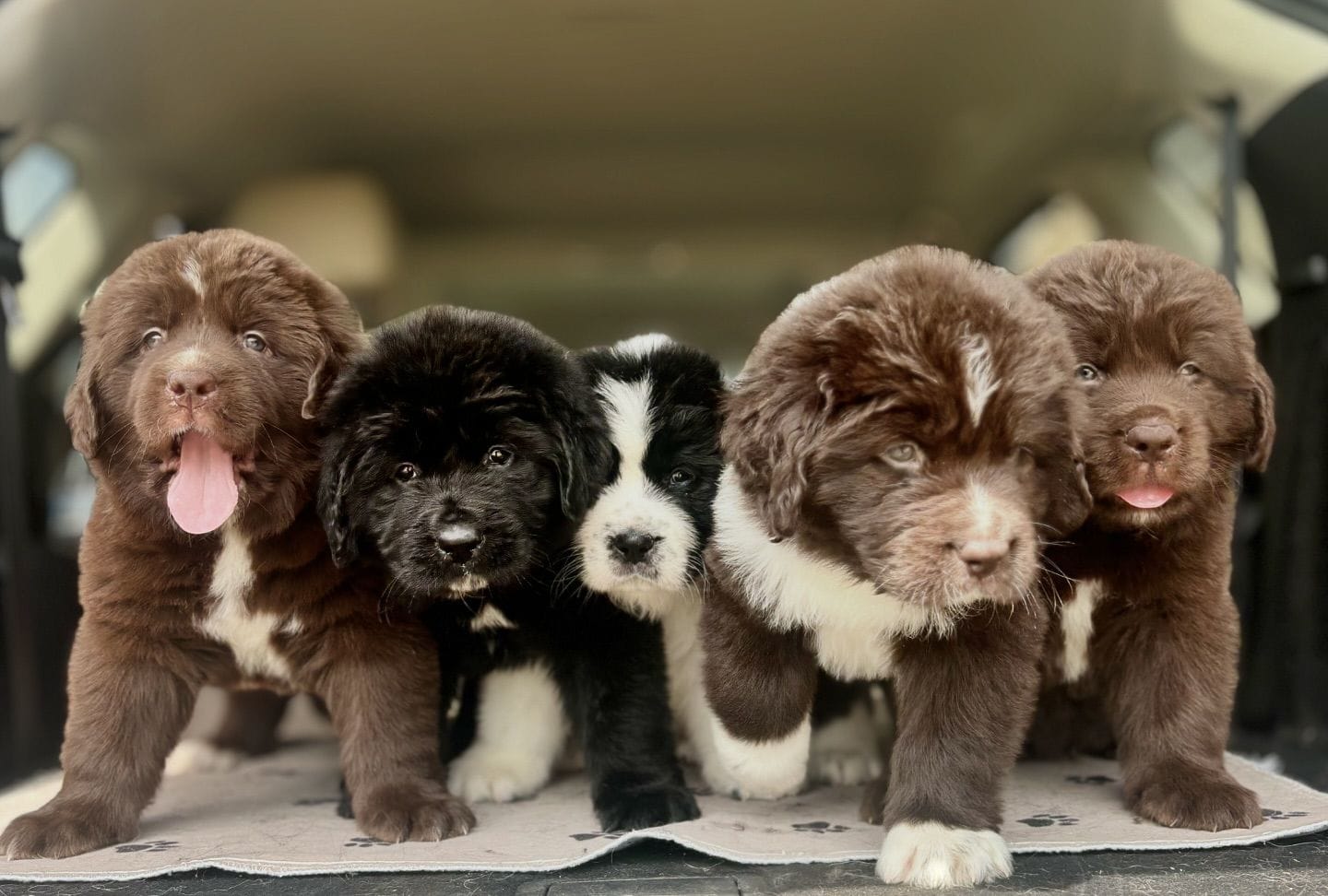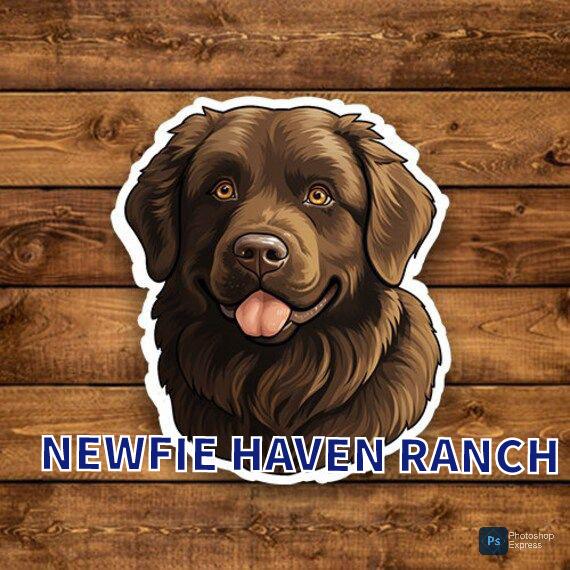The Majestic Gray Newfoundland Dog : A Perfect Family Companion

The gray Newfoundland dog is a majestic and gentle breed known for its impressive size, loyal nature, and beautiful, thick coat. Often mistaken for a bear due to their large frame and fluffy fur, these dogs are more than just a sight to behold. With their calm demeanor and strong protective instincts, they make perfect family pets and excellent working dogs. In this guide, we’ll explore everything you need to know about the gray Newfoundland dog, including its history, temperament, and care needs.
Can Newfoundland Dogs Be Gray?
Yes, Newfoundland dogs can be gray. While the most common color variation is black, Newfoundlands also come in brown, gray, and Landseer (white with black markings). The gray Newfoundland dog is particularly striking, with a soft, silvery-gray coat that sets them apart from other variations. The gray color, though less common, is officially recognized by major kennel clubs, and these dogs share the same gentle temperament and loyal nature as their black or brown counterparts.
The History of the Gray Newfoundland Dog
Newfoundland dogs, including the gray variation, have a rich history. Originating from the island of Newfoundland in Canada, these dogs were bred to assist fishermen. Known for their exceptional swimming ability, they were used to pull nets, retrieve fish, and even rescue people from drowning. The gray Newfoundland dog inherited these impressive water skills, although they are also valued for their companionship and protection in modern homes.
In terms of history, the gray color is less common but still recognized by major kennel clubs. This color variation has become increasingly popular, especially among families who appreciate the dog’s unique look combined with its loyal temperament.
Grey Newfoundland Personality and Temperament
The gray Newfoundland dog is renowned for its calm, gentle, and friendly nature. They are known as “gentle giants,” making them excellent companions for families with children. Despite their size, these dogs are incredibly patient and kind-hearted. They tend to be quite mellow, though they are always ready to protect their family when needed.
Their affectionate and easygoing disposition makes them great pets in both urban and rural settings. They are not known to be overly aggressive, though they can be cautious around strangers, especially if they sense any potential threat to their family.
Grey Newfie Training and Socialization
Training a gray Newfoundland dog requires patience and consistency. While they are intelligent and eager to please, they can also be quite independent and may take their time to respond to commands. Positive reinforcement methods work best for this breed, as harsh training tactics can lead to resistance.
Socialization from an early age is crucial for this breed. Exposing a gray Newfoundland dog to different people, animals, and environments ensures that they grow up to be well-rounded and confident. Despite their large size, they are generally very gentle with children and other pets, making them great additions to family life.
Grooming Your Gray Newfoundland Dog
One of the most important aspects of caring for a gray Newfoundland dog is regular grooming. Their thick, double-layer coat helps them stay warm in cold weather, but it also requires attention to prevent matting and tangling. Brushing your dog’s coat at least twice a week is essential to keep it in good condition. During shedding seasons, more frequent grooming may be necessary.
It’s also important to keep their ears clean and dry, as Newfoundlands are prone to ear infections due to their floppy ears. Regular teeth brushing and nail trimming should be part of your routine as well.
Health Considerations for the Gray Newfoundland Dog
Like all large breeds, the gray Newfoundland dog is prone to certain health issues. Common conditions include hip dysplasia, elbow dysplasia, and heart problems like dilated cardiomyopathy. Regular vet check-ups, maintaining a healthy weight, and providing appropriate exercise can help reduce the risk of these conditions.
Being a large dog, the gray Newfoundland has a relatively short lifespan, typically ranging from 8 to 10 years. However, with the right care and a healthy lifestyle, they can enjoy many happy years as part of your family.
Exercise and Activity Levels
While gray Newfoundland dogs are known for their calm and laid-back nature, they still require regular exercise to stay healthy and happy. They are natural swimmers, and if you have access to a safe body of water, this is a perfect way to engage them in physical activity. A daily walk, along with some playtime in the yard, should be sufficient for most Newfoundlands.
Though they are not as energetic as some other breeds, they still need mental stimulation. Puzzle toys, training sessions, and spending quality time with their owners help keep their minds sharp and prevent boredom.
Is a Newfoundland a Good Family Dog?
Absolutely! The gray Newfoundland dog (and other Newfoundland dogs) is known for being an excellent family dog. They are incredibly gentle and patient, making them fantastic companions for children. Newfoundlands are also very protective and will instinctively guard their family members. Their calm temperament makes them great with other pets and they generally get along well with other dogs. Despite their large size, Newfoundlands are gentle giants, often described as one of the most well-mannered dog breeds.

Their ability to bond closely with their family and their natural affinity for children makes them a popular choice for families looking for a dependable, loving pet. Whether you have young children or other pets, a gray Newfoundland dog will adapt well and become an integral part of your home.
The Gray Newfoundland Dog: An Ideal Family Pet
The gray Newfoundland dog is an ideal choice for families looking for a loyal, loving companion. Their gentle temperament and patient nature make them perfect for homes with children and other pets. Their stunning gray coats are a true testament to the beauty of this breed, and their hardworking, protective instincts are invaluable.
Whether you’re looking for a dog that can serve as a water rescue worker or simply a loving companion for your home, the gray Newfoundland dog fits the bill. With proper care, training, and attention, these dogs will bring joy and warmth to any family lucky enough to have them.
Conclusion
The gray Newfie dog is more than just a beautiful breed; it’s a loving and devoted companion with a rich history. From their impressive swimming skills to their patient and gentle nature, these dogs excel in a variety of roles, including as family pets and working dogs. If you’re considering adding a Newfoundland to your home, don’t overlook the stunning gray variation. With their distinctive coat and calm demeanor, they are sure to become a beloved member of your family.
More About Newfie Dogs
–Newfoundland Puppies| Available Now |

–Newfoundland Landseer Puppies for Sale

-Newfoundland Breed Information: A Complete Guide

-Newfoundland Dog Health Issues

-The Brown Landseer Newfoundland
-The Newfoundland Family Tree: Exploring Bloodlines and Pedigree
-Newfoundland Dog Health Issues
-The Brown Landseer Newfoundland
